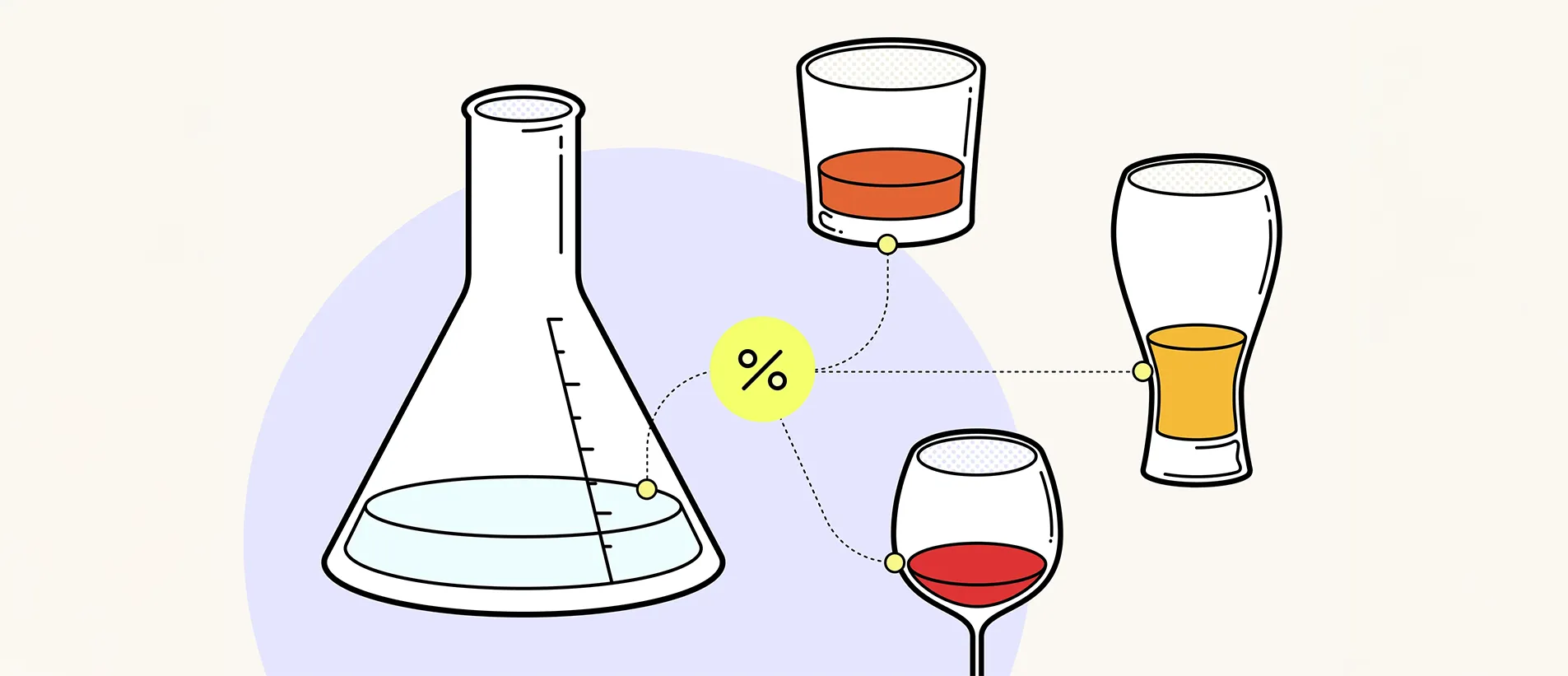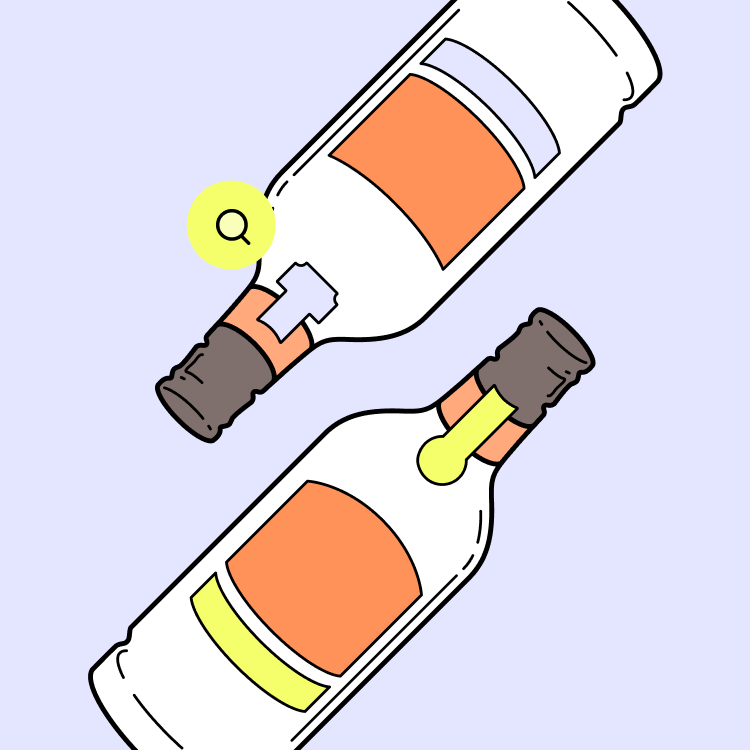All alcohol drinks contain ethanol, but the amount can vary
Whether you drink beer, wine or spirits, they all contain the same type of alcohol called ethanol. This is created when either fruits or grains are fermented to produce alcohol drinks. It’s the ethanol in these drinks that affects your mood and reactions – and ethanol affects you in the same way, regardless of what type of drink you choose.
Of course, different drinks have different concentrations of alcohol. This is generally expressed as the percentage of alcohol by volume or ABV. You‘ve probably noticed that bottles and cans often include the strength of the drink as ABV on the label. It’s the ABV that can help you be aware of how much alcohol is in your drink.
- Spirits have the highest concentration of alcohol and most contain around 40% ABV. Strength can vary considerably, however. Some vodkas contain 30% ethanol, while some bourbons may be around 60% ABV and certain ‘high proof’ spirits can have up to 95% alcohol content.
- Liqueurs, which are also spirits-based, generally contain less alcohol and their ABV may be below 20%.
- Wine is less concentrated than spirits and generally contains between 12 and 15% ABV. However, some wines can be stronger, and fortified wines like port or sherry are usually around 20% ABV. The alcohol concentration in beer as a category is lowest, and most regular beer ranges between 4% and 10% ABV. Some craft beers may be comparable in strength to certain wines at around 12% ABV.
- The alcohol concentration in beer as a category is lowest, and most regular beer ranges between 4% and 10% ABV. Some craft beers may be comparable in strength to certain wines at around 12% ABV.








